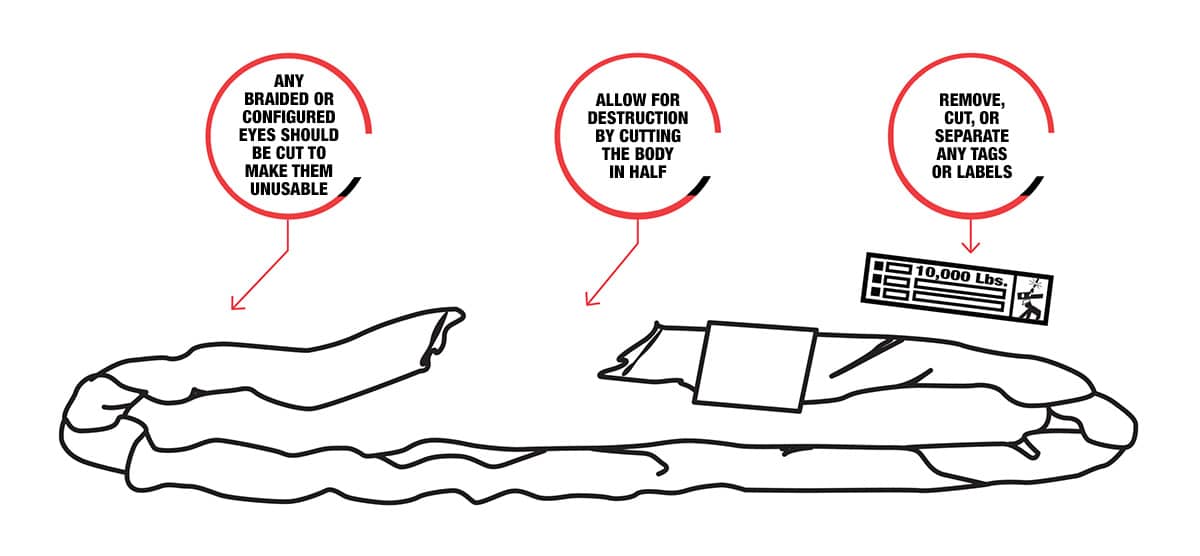4-4 | Disposal of Damaged / Failed Slings
<p>When performing a roundsling inspection, you’ll want to identify a potential issue and take action on it before the sling is connected to any rigging hardware. A small cut, burn, tear, or hole in a synthetic roundsling can compromise the strength and lifting capabilities of the sling when under load and therefore the sling must be removed from service immediately.</p>
A synthetic roundsling is strong, flexible, and pliable—allowing it to adjust to and tighten around loads better than some other types of slings. Roundslings are an economical option that are versatile and can be used in a variety of hitches including vertical, choker, or basket—so they can be used in many different types of applications. Another benefit is that they have a jacket that provides an added level of protection to the inner load-bearing fibers.
When performing a roundsling inspection, you’ll want to identify a potential issue and take action on it before the sling is connected to any rigging hardware. A small cut, burn, tear, or hole in a synthetic roundsling can compromise the strength and lifting capabilities of the sling when under load and therefore the sling must be removed from service immediately.

If it is determined that a roundsling meets the removal from service criteria, then the following actions need to be taken to discard and render the sling unusable:
- The standard endless configuration of a roundsling typically allows for destruction by cutting the body in half
- If the sling has been braided or configured to form an eye on each end, then the eyes should be cut to make them unusable
- Best practice is to remove, cut, or separate any tags and labels from the sling
- Place scrap into your facility’s recycling bins
